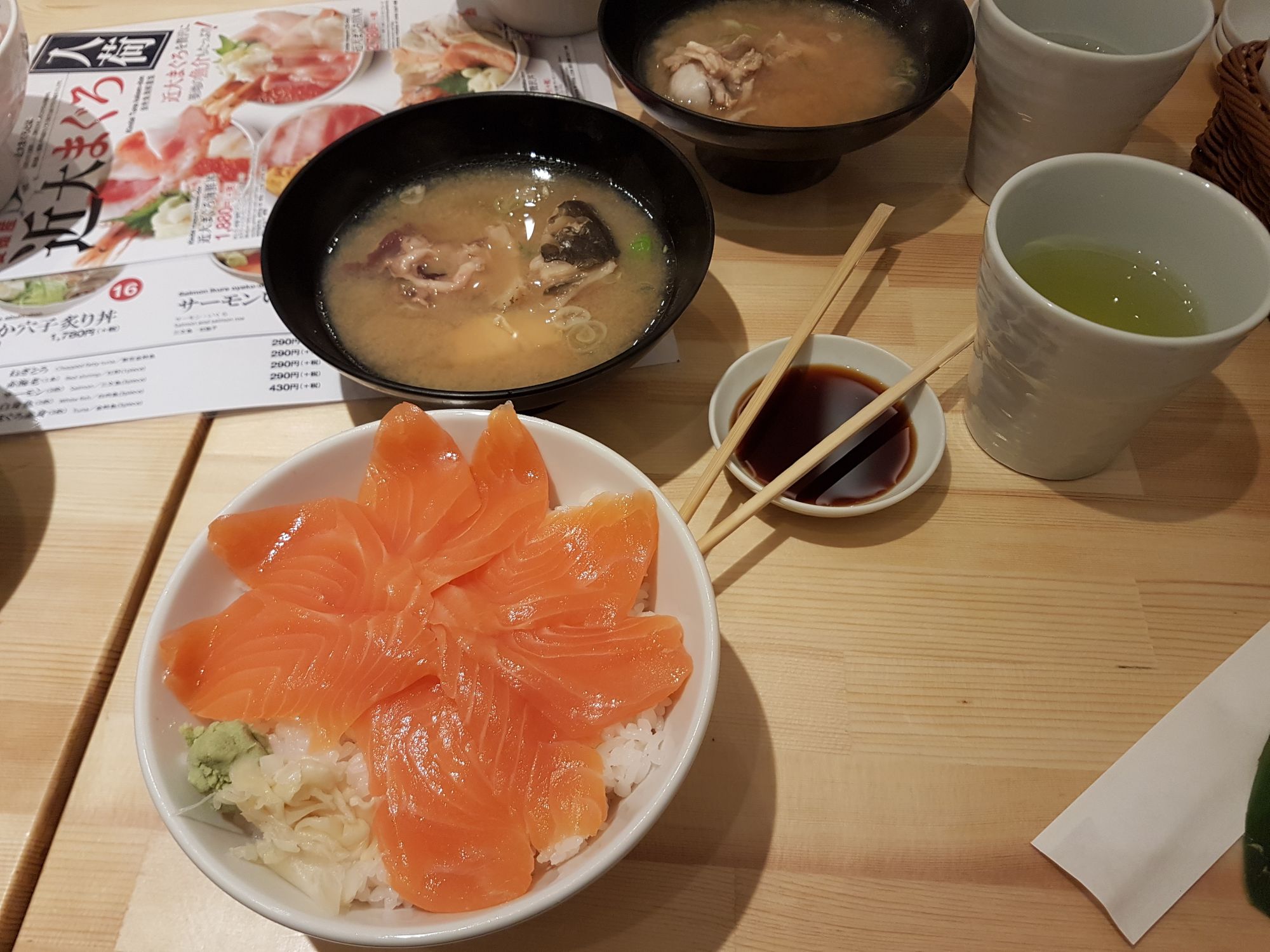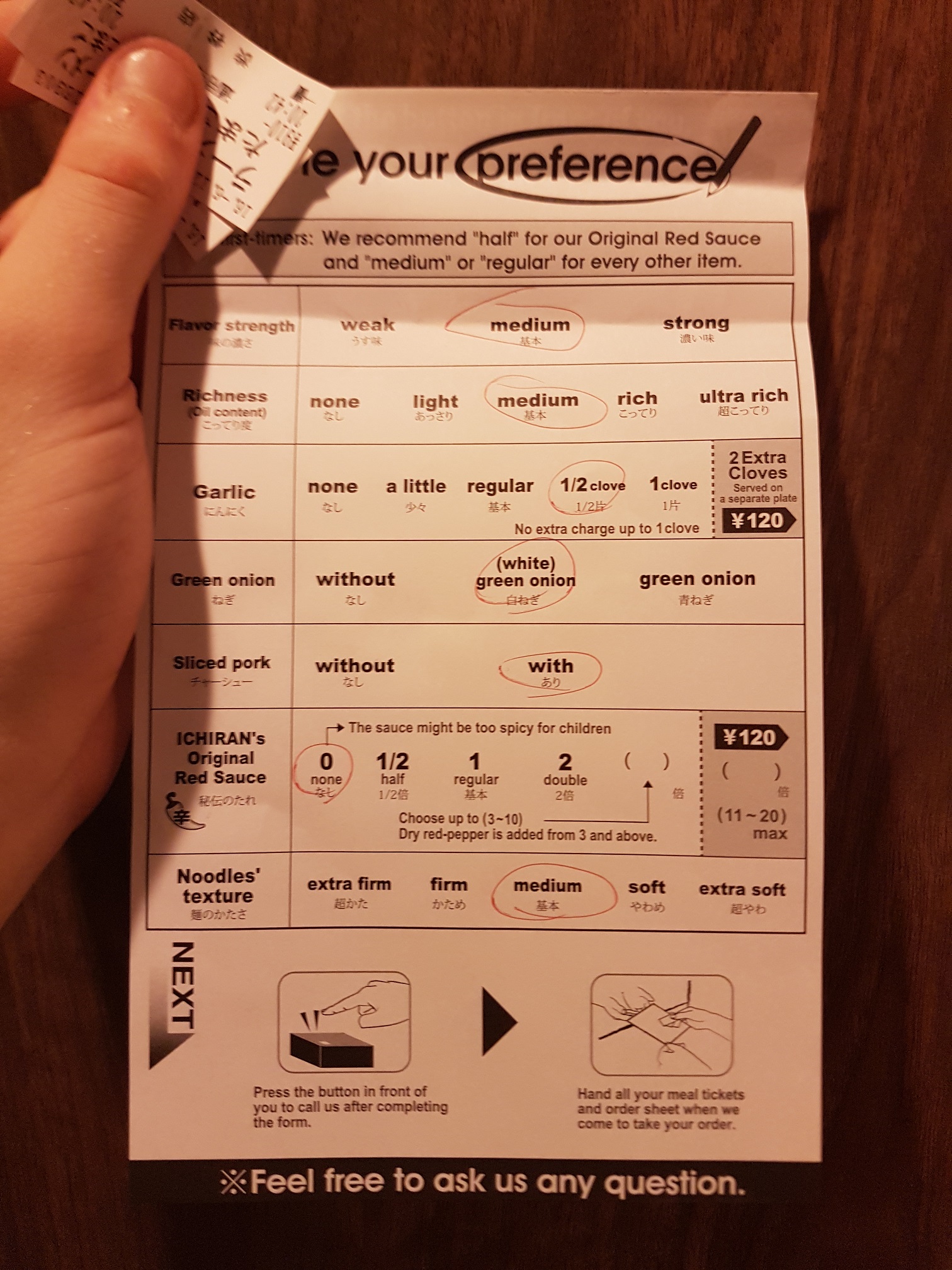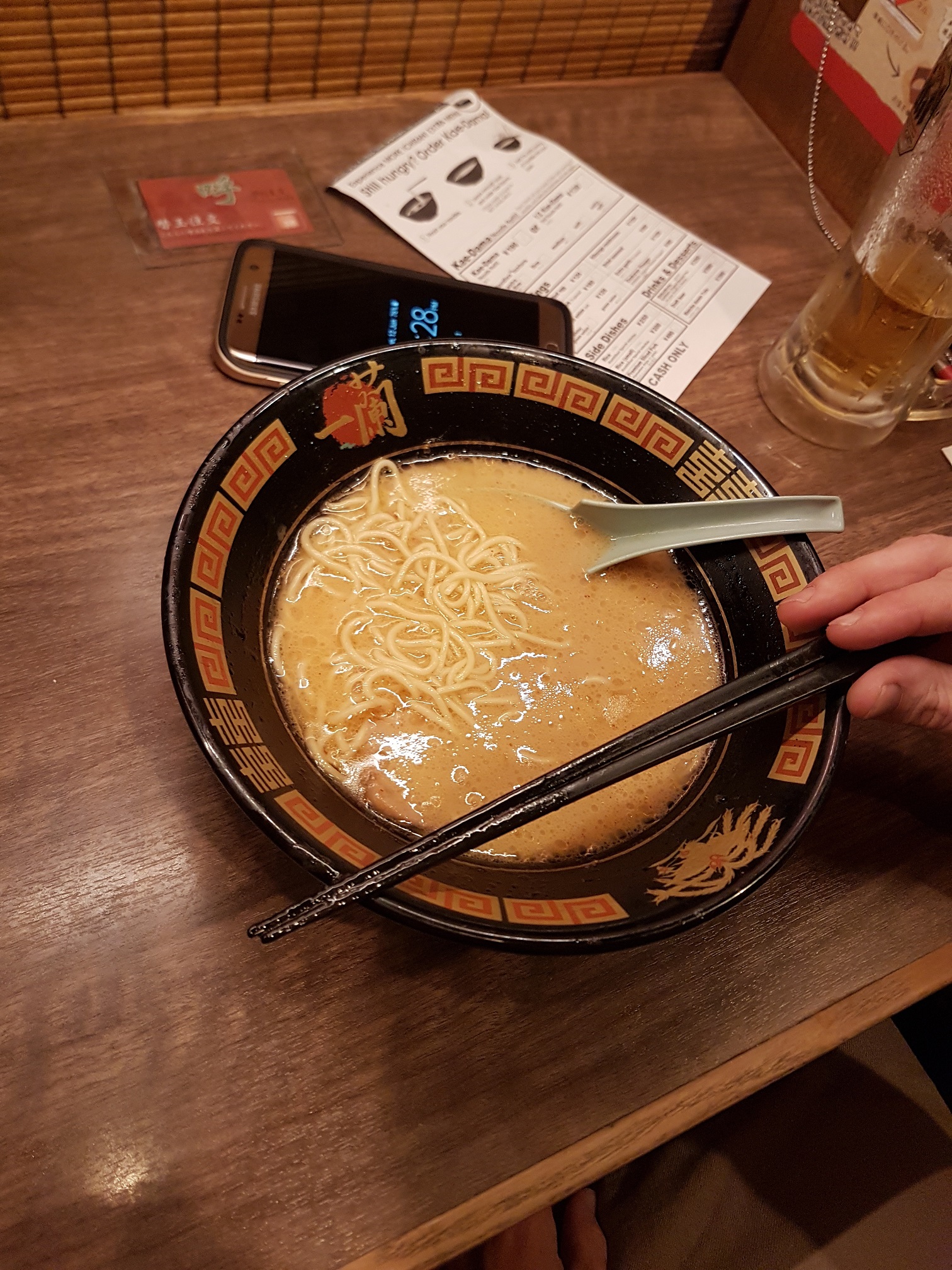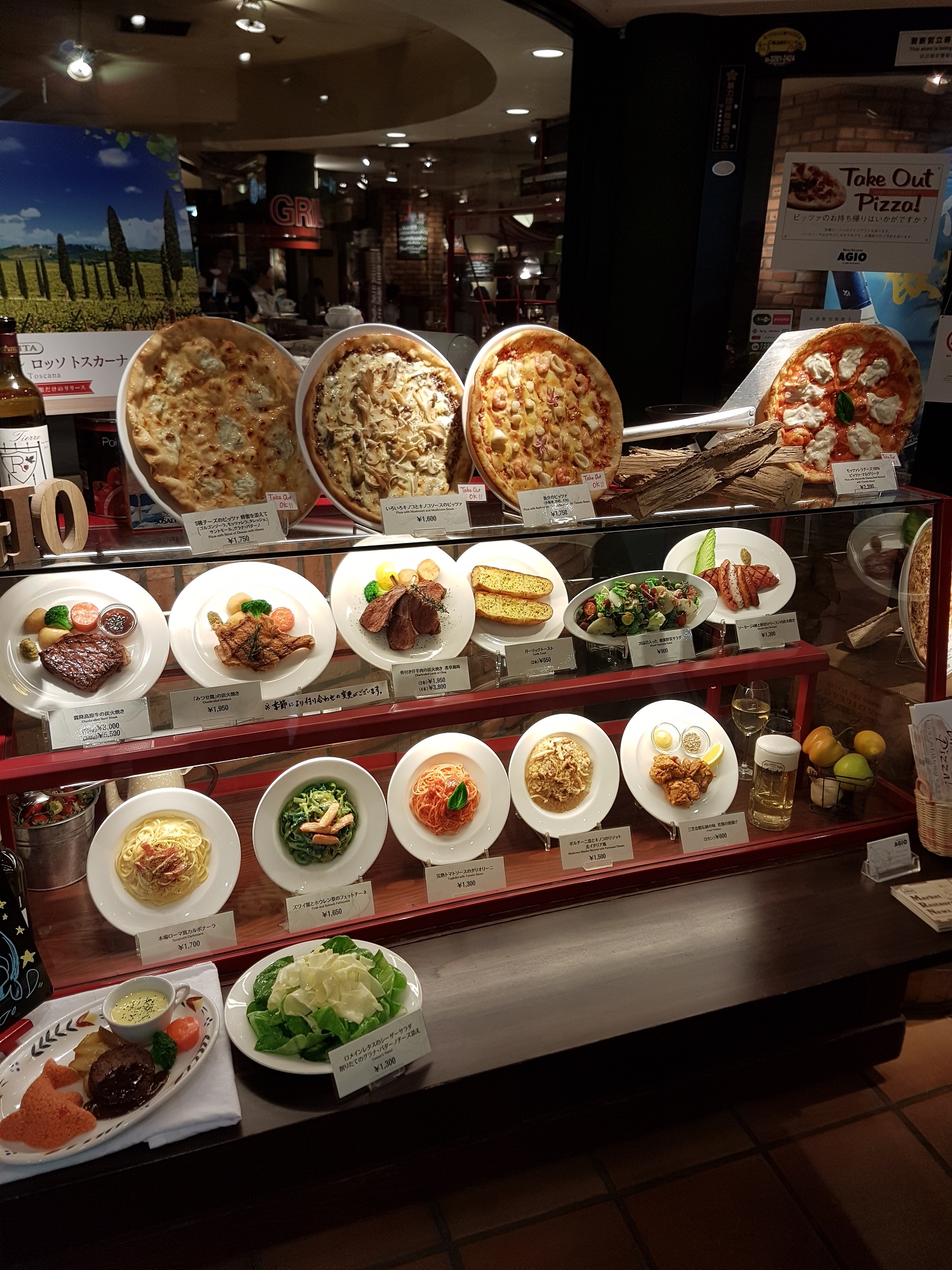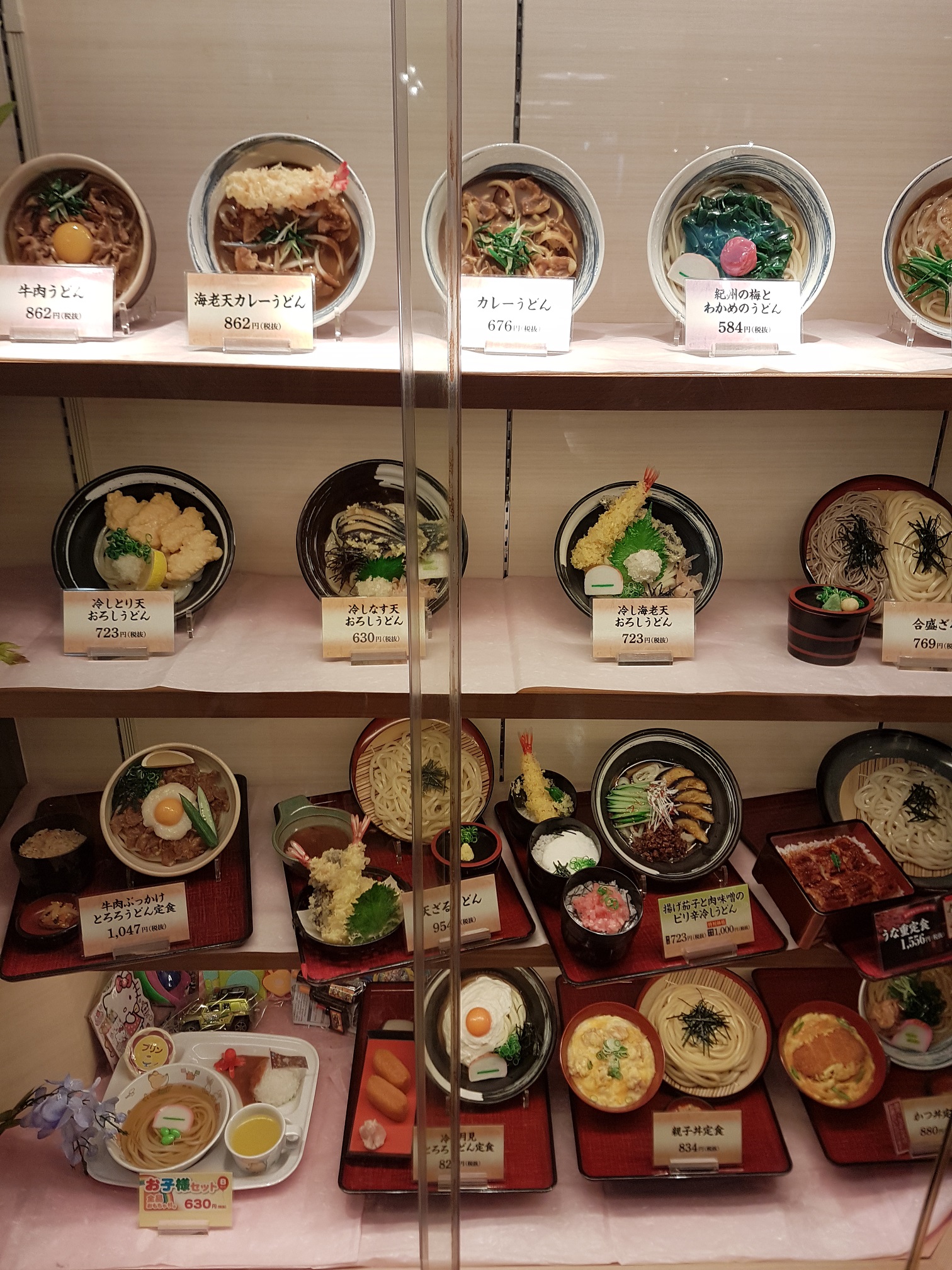This is the second of four posts about my recent trip to Japan. Previously, we met Japanese Buddha in Tokyo
I love food, so I had to try as many different things as I could in Japan while I was there. There was so much variety and difference in comparison to home that I figured I could easily spend a whole post on it, to talk about things including the different 'rituals' that go along with different dishes, historical influences on the cuisine, and unique Japanese twists on western favourites.
I. Rituals and eating
I mentioned 'rituals' just now. When you buy a meal of most western types - say pasta, or pizza, or burgers, or a roast, or sandwiches - it's usually a pretty simple affair. You get a knife and fork and you just eat it. Something that I noticed was a recurring theme in Japanese food[1] was that often eating a meal was a bit more complicated, requiring a bit of knowledge beyond 'put food in mouth'.
A friend of mine who's a bit of a japanophile recommended something called 'Shabu Shabu'[2] at Mo Mo Paradise, a place that does all-you-can-eat hot pot. None of us had eaten hot pot before but we were game to try new cuisine so we made a detour to Takadanobaba on one of our nights in Japan. Before long we were sitting in front of several stacks of trays with strips of raw meat, a simmering pot and a few plates of veggies, sauces and rice. It was at this point we realized none of us knew how we were supposed to actually eat this - do we just throw everything in the pot at once? Does the sauce go in the pot as well? What about the raw meat, do we need multiple sets of chopsticks to handle it safely?[3] Below is a photo of the scene before we started eating.
I whipped out my phone and started rapid fire texting my girlfriend, who luckily had eaten hot pot before and could give us real-time instructions on how to eat shabu shabu. The answer, if you're still in suspense, is to heat the pot to a boil, chuck the veggies in and bring to a simmer, then swirl the meat around in your pot with chopsticks until it's cooked, finally eating it over rice and dipping sauce.
Another type of ritual, one less related to the actual cooking, has to do with something you could call "the salaryman dining experience." The idea behind it is to cater for the average salaryman. The japanese salaryman is a weary creature, snatching a quick late meal after leaving the office, tired and desiring escape from the human masses that were just crammed ear to ear next to him on the train. We went to a chain called Ichiran Ramen that caters for precisely this crowd, their policy to "reduce interactions with shop staff as much as possible." Ichiran was probably the best ramen place we visited while in Japan, and we had a lot of ramen. I was already a ramen addict after living in Sydney, and after introducing my friends to it we made it our quest to have ramen somewhere different almost every day.
Upon entering, you're greeted with a vending machine with images of noodles, refills, seasonings and drinks on it, where you pay and print out an ordering slip. You can see my ordering slip below, giving the ability to customize every aspect of your meal from oil content to noodle firmness. If I'm being totally honest I probably couldn't tell the difference between most of the options without them sitting in front of me, but that didn't make it feel any less awesome even if I was choosing the default option for everything.
Once you have your slip you wait in a lobby type area where there is a light up seating map. You can see which seats are occupied and find one for yourself, or wait if the restaurant is full. Then when you take your seat, the chef comes and takes your order through a small window. A minute or two later your order gets placed on the bench in front of you[4] and the window bangs shut, leaving you to your meal. When you're finished you just walk out, as payment was handled before the meal. Brilliant! I know if I lived in Tokyo I'd be hitting these up on a regular basis.
Another tradition of the salaryman is the "ekiben." Japan has an extensive bullet train (shinkansen) network, and on business trips or the commute home between cities, it is something of a tradition to buy ekiben from vending machines or shops at the shinkansen station. They're a type of bento box full of delicious treats and only available at the train stations. It's normally very rude to eat or drink on public transport but an exception is made on the shinkansen.
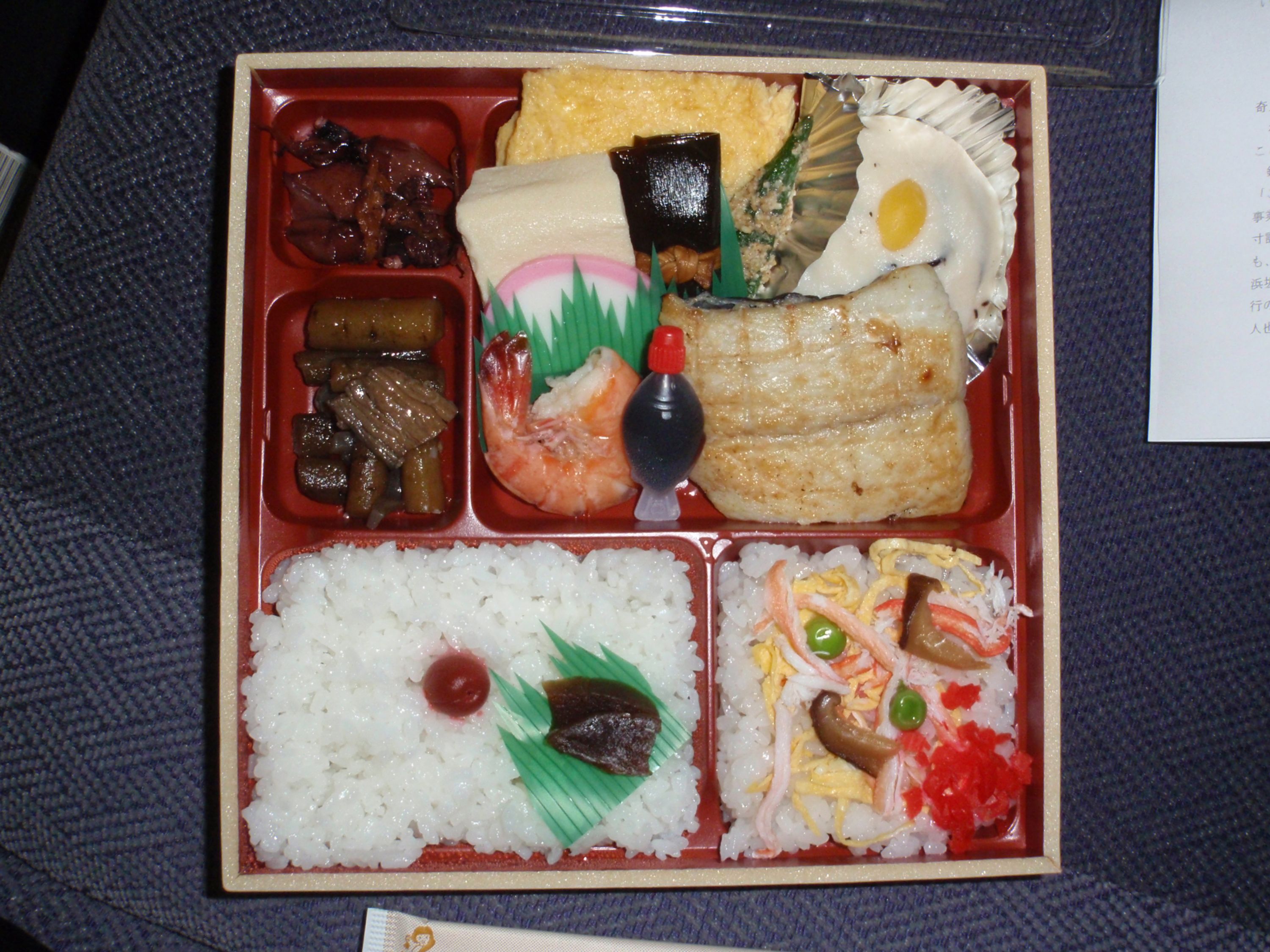
II. Japanese inventions
Japan is an island nation, so naturally their diet has a lot of seafood. Even though some of the guys had never eaten raw fish at all, we had to go at least once while we were there to grab sushi. We went for a sushi breakfast at Tsukiji fish markets on one of the days we were in Tokyo and they managed to choke down a few portions. The group was split on whether it was disgusting or the best sushi ever. Callum and I assured them that what they were eating was actually delicious and they should savour it, so they forced some down anyway.

We also snagged some street food while in Nara, and got the chance to try real Japanese Takoyaki. Octopus balls aren't my favourite thing to eat but I can't deny that it was better than any takoyaki I'd had in Australia.

Something really interesting about going to restaurants in Japan was that they almost always had fake versions of their dishes on display outside the restaurant.
The photos above are only a smattering of examples of these; literally any type of food you can think of, they'll turn it into a plastic model. This art form developed in the 1920's and I'm not joking when I call it an art form. The craftsmanship is taken to some extreme levels and the manufacturing process is a fiercely guarded trade secret. I managed to find a video of a cabbage being made out of wax on youtube which I found pretty interesting:[5]
Also unique to Japan is the vending machines that can be found almost every ten or twenty meters along the street.
I can only assume these are effective and profitable because of the extreme density of Tokyo. If you were to place one of these in the streets of my home suburb of Pyrmont in Sydney, it would just sit unused most of the time, and likely be destroyed within a week - and Pyrmont is the most densely populated suburb in Sydney. In Tokyo you could turn down nearly any side street to find a cluster of vending machines - we learned to keep an eye out for them because they also happened to be one of the only places we could find public rubbish bins. Tidiness is a cultural trait in Japan and not only do they expect you to carry any rubbish home with you, the population of Tokyo actually does it.
III. Not quite familiar
I went over there expecting to eat mostly Asian/Japanese food, and mostly I was right, but it also surprised me how many things Japan has in common with Australia. There were still international cuisines of all description around, if you looked hard enough, and KFC and McDonalds were as omnipresent as ever. Everything had it's own unique Japanese twist though.
For example, in the fast food places we visited, along with the usual lemon, orange and cola soft drinks there was always a melon flavour as well. It's a bright radioactive green soda that tastes nothing like melon of any kind and is apparently a cultural phenomenon.
In the absence of Gatorade or Powerade Japan has their own style of sports drinks. Calpis and Pocari Sweat are two popular brands of electrolyte rich drinks over there that fill much the same purpose as Gatorade does in Australia[6]. They're found in a lot of vending machines as well, and I was pretty grateful for that while sweating a trail around Tokyo in the summer heat. I can't really describe the taste in any meaningful way, it's just something you need to try for yourself.

Kicking that ramen addiction is going to be hard...
Next up, Kyoto, Osaka, and Nara.
Footnotes
Or maybe just Asian food in general? Japan is the first Asian country I've been to, so it's hard for me to know... yet. ↩︎
Apparently named for the sound it makes when you swirl the ingredients around in the cooking pot. ↩︎
My girlfriends answers to these questions were: "no, just the veggies", "no, it's for dipping", and "If you want to be safe I guess, but the boiling water should sterilize it." ↩︎
The bench itself has small doors to the left and right so you can shut yourself off from your neighbour even more, slurping in (almost) solitude. ↩︎
And another one that goes for 7 minutes if you found that video as engrossing as I did: https://www.youtube.com/watch?v=PPQrNkOgttQ ↩︎
That is, to be drank after an intense workout or general sweating to replenish sodium. ↩︎
